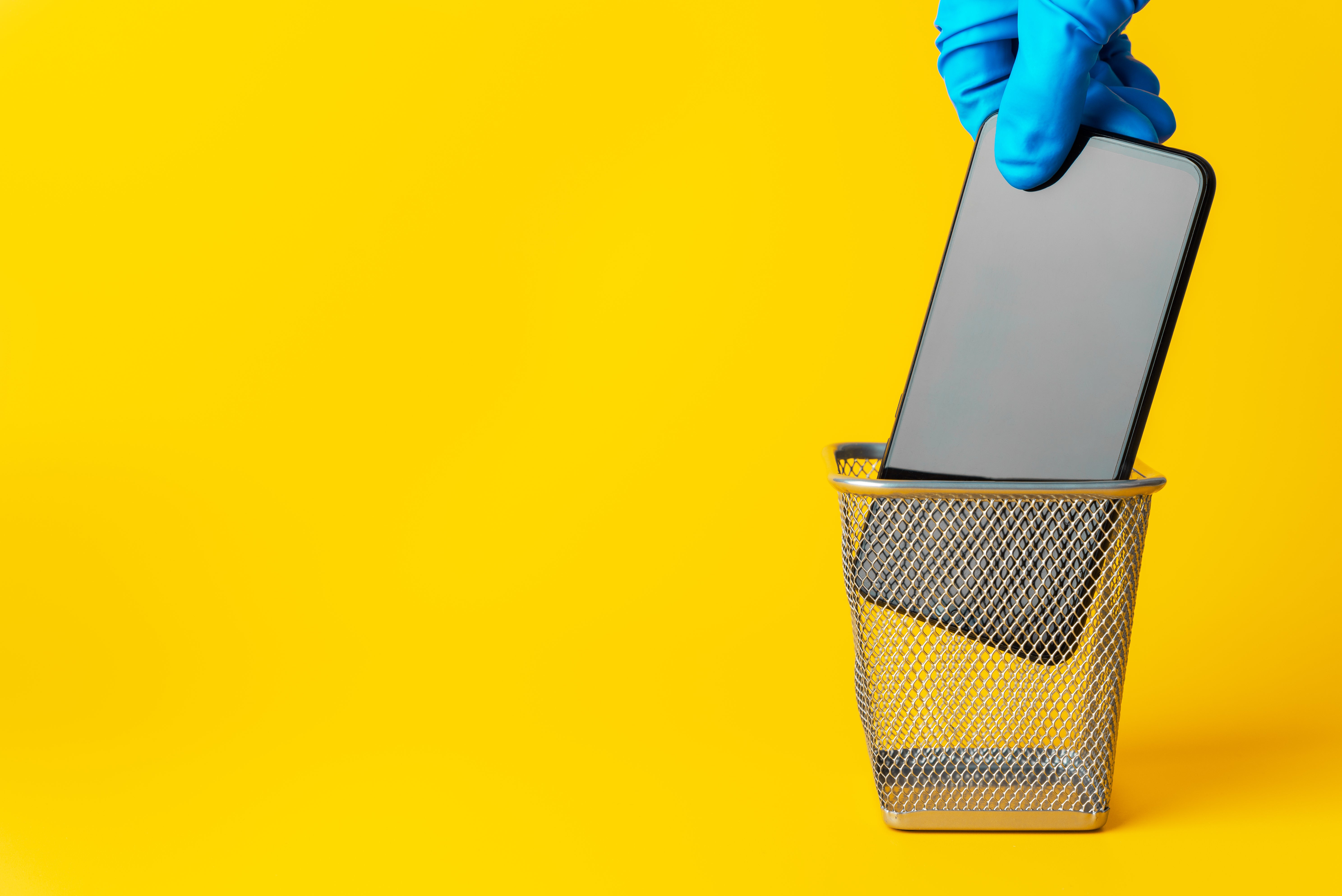Banner artwork by fizkes / Shutterstock.com
The World Health Organization called burnout an “occupational phenomenon,” a syndrome “resulting from chronic workplace stress that has not been successfully managed.”
Author and rest advocate, Alex Soojung-Kim Pang (Rest: Why You Get More Done When You Work Less says: “Exhausted workers can’t give their best, take less initiative, and are more cynical.”
“Exhausted workers can’t give their best, take less initiative, and are more cynical.”
Author and rest advocate Alex Soojung-Kim Pang
I have previously written about burnout in the ACC Docket (How Positive Practices Help Reduce Burnout, Using Travel and Nature to Support Burnout) and identified the six causes of burnout (overwork, lack of control, lack of reward, isolation, unfairness, and mismatch of values) in my guest blog for Better Ipsum. These articles identified the signs of burnout and suggested ways we can try to prevent it or recover from it.
This month, I focus in-depth on changing our perspective. I look at the "slow productivity” movement coming from professor and author Cal Newport’s recent book, Slow Productivity: The Lost Art of Accomplishment without Burnout, in which he advocates for slowing down smartly, and his earlier works on the value of “deep work” and the importance of digital minimalism.
In addition, I look at the importance of “essentialism,” through Geoff McKeown’s book, Essentialism: The Disciplined Pursuit of Less. By changing our perspectives away from the frenetic work, and embracing these practices, we can learn to “do less but better” making our “highest possible contribution” as well as embracing “the lost art of accomplishment without burnout.”
What is productivity?
Productivity makes sense in an agricultural or supply chain when farmers and assembly line workers can be assessed on what they produce, says Newport in Slow Productivity.
While the same cannot be said for “knowledge workers,” like lawyers, the same measure of productivity has endured and become what Newport calls pseudo-productivity, “the use of visible activity as the primary means of approximating actual productive work.”
Tools like email and the Slack platform that “make it possible to visibly signal your busyness with minimal effort,” says Newport, have exacerbated the pseudo-productivity behavior and “inevitably led to more and more of the average knowledge worker’s day being dedicated to talking about work, as fast and frantically as possible, through incessant electronic messaging.”
High levels of electronic communicating all day lead to burnout. A recent McKinsey and Lean In survey of more than 65,000 American employees primarily from knowledge sector jobs “found a significant increase in those describing themselves as feeling burned out “often” or “almost always,” Newport points out.

Is there a solution to a treadmill of pseudo-productivity which appears to be “producing” less than ideal outputs and is burning people out in the process? Newport thinks the solution may lie in the “slowness revolution.” Taking the idea from the “slow food,” “slow cities,” etc., movements, Newport applied the philosophy to a new suggested way to work – slow productivity.
The slow productivity revolution
To slow productivity, change mindset and embrace three central principles, says Newport. Apply this approach to legal work in general, operations projects, and other work and projects outside of day-to-day jobs:
- Do fewer things: “Strive to reduce your obligations to the point where you can easily manage accomplishing them with time to spare. Leverage this reduced load to more fully embrace and advance the small number of projects that matter most,” says Newport.
This requires a change to the meaning of what it means to be “productive.” His suggested ways to do fewer things:
- Limit projects – When considering a new project, estimate the time it will take and block this out on your calendar. If you are unable to find the time in your calendar, then you don’t have time to take on the project.
- Limit daily goals – Work on one project a day noting you will need to work around meetings, emails, and administrative tasks.
- Put tasks on autopilot – Try to block out certain times for repetitive tasks (budgets, administrative, etc.) which will induce you to work on autopilot during those times.
- Create a shared task list when relevant (this could even be with business unit owners outside of the legal team who can see what you are blocking out) – When someone asks you to do something, you direct them to the board or schedule and they must spend time outlining exactly what they need and include all the supportive information. In doing so, they might realize the task does not need to be done or they can at least comprehend your workload. This is similar to legal teams sharing Monday boards or other tools with business users.
- Place tasks and projects into into “holding tank” and active lists – When you receive a new task, add it to the holding tank. Limit the active list to three projects or items. Only move things onto the active list once you have completed something. If you have a large project, for example, such as a large procurement or contract, and you have time on your active list, only move the next activity you need to complete from the project (e.g., review contract).
- Set up an intake procedure – Many teams and legal operations already have set intake procedures which ask the business users to input all information needed and often includes the lawyer acknowledging the business user and including estimated timing to respond. Newport also suggested setting out how many other items or projects are ahead of this person’s request – this often results in users withdrawing what is not as urgent a request as they implied.
“Don’t rush your most important work. Allow it to, instead, unfold along a sustainable timeline, with variations in intensity, in settings conducive to brilliance.”
Cal Newport
2. Work at a natural pace: “Don’t rush your most important work. Allow it to, instead, unfold along a sustainable timeline, with variations in intensity, in settings conducive to brilliance,” says Newport. In addition to not rushing your most important work, Newport suggests:
- Double your timeframes as a blanket policy, which, he suggests, results in being able to complete work at a more leisurely pace and also be more realistic.
- Simplify your workday to ensure you reap the rewards of slowing down your work pace. Try to ensure no more than half the day is meetings or calls. The simplest way to do this is pre-block out focus times where meetings and calls cannot be scheduled.
- Every time you block out time for a meeting, block out the same amount of time that day to focus – that way you balance out your day.
- Implement days where you will not schedule meetings.
- Include time pre-booked into your calendar for rest. This is particularly important after a long period of work and deadlines. Block out time as soon as you know your deadline to allow some rest and do something unrelated to your usual work to recharge.

3. Obsess over quality. Once you do the first two steps, the final is to “obsess over the quality of what you produce, even if this means missing opportunities in the short term,” says Newport.
To embrace the slow productivity movement, we have to first value what it produces: high-quality deep work.
The value of deep work
Deep work is an approach that allows you to turn off as much as you can of the outside world and submerse yourself in what you are doing. Newport’s slow productivity built on his earlier deep work model that advocates for “professional activities performed in distraction-free concentration that pushes your cognitive capabilities to the limit.
“These efforts create new value, improve your skill, and are hard to replicate,” Newport says. Newport unsurprisingly blamed network tools (email, texts, social media sites and infotainment sites like Reddit) for fragmenting our attention and keeping many of us concentrating on “shallow work” – “non-cognitively demanding, logistical-style tasks, often performed while distracted. These efforts tend to not create new value in the world and are easy to replicate”.
We need to change our perception of what is important – it is not the quantity of tasks we are used to producing. We need to reframe and recognize the importance of “deep work,” not only for the quality output it creates, but because we need to keep mastering “the art of quickly learning complicated things” to “remain valuable” as employees, Newport says. Mastering deep work will help our careers because it is “increasingly rare and increasingly valuable” and, therefore, mastering the skill will help your career longevity. It should also help reduce burnout as it reduces the stressors and core elements of burnout.
We need to change our perception of what is important – it is not the quantity of tasks we are used to producing.
We need to recognize that the culture of connectivity has made it easier to reply and receive answers quickly but has produced a false sense of productivity as we run our lives out of our inboxes.
We can improve our focus, reduce our pseudo-productivity, and move toward appreciating deep work, per Newport, using these techniques:
- Recharge properly to ensure you have the energy to do deep work – Attention Resoration Theory (ART) claims that spending time in nature helps your ability to concentrate. ART promotes that you can restore your ability to direct your attention by giving it an active rest (for more on ART see my earlier article How Nature Can Reduce Mental Fatigue).
- Slow down at the end of the day – Any work that evening downtime replaces should be relaxing. Have a strict shutdown ritual that you use at the end of the workday – for every task or goal that is not completed, you should either have a plan for its completion or capture it somewhere where it will be revisited when the time is right. These rituals take time to become automatic but should become a permanent fixture in a few weeks.
- Break from focusing – Try to schedule in time when you can “give in to distraction,” such as scheduling when you can use the internet. And stick to it. Keep a notepad by your desk identifying when you can next use the internet and “until you arrive at that time, absolutely no network connectivity is allowed – no matter how tempting,” says Newport. This works even if your job requires a lot of internet or email use, notes Newport. You can even block more frequent use of internet and email: “The total number or duration of your internet blocks doesn’t matter nearly as much as making sure that the integrity of your offline blocks remains intact.” This strategy could also be used in spare time or over weekends to reduce overall device use.
- Productively meditate – Block out a period of time when you are occupied physically but not mentally (walking, jogging, driving, showering) where you focus your attention on a single well-defined professional challenge. Bring your attention back to the problem if it wanders. Try this approach two to three times per week. This is similar to activating your default mode network which I have written about in The Power of Unfocus.

- Detox from the digital world – In Newport’s Digital Minimalism, he suggests:
- Take a 30-day digital detox and declutter from all optional technologies.
- During the 30 days, explore and rediscover activities and behaviors you find satisfying and meaningful that don’t involve computers.
- At the end of the 30 days, reintroduce optional technologies starting from a blank slate. For each technology you re-introduce, determine what value it serves in your life and how specifically you will use it to maximize its value.

Embracing essentialism
Finally, as we move towards a shift away from low value pseudo-productivity to higher value deep work and slow productivity, we can embrace essentialism. McKewon’s work on essentialism suggests that non-essentialism is everywhere for three main reasons:
- There are too many choices from which we can pick.
- There is too much social pressure to do more.
- We have the mistaken idea that we can have it all. (“Stressed people cram too much into their diaries,” McKewon says, and, while employers advocate work/life balance, they expect people to be on their phones when off).
There is too much social pressure to do more.
In contrast, the essentialism ideology advises to:
- Explore and evaluate – In much the same way we look at our clothes and give away the ones that don’t look good on us or we don’t wear often, we should ask before we make a commitment to do anything if it will make the highest possible contribution to the pursuit.
- Eliminate – Stop activities that do not make the highest possible contribution to your career and well-being. One such way is to rank any activity by thinking of the single most important criteria of what you or others are looking for and score it – if it scores below 90 percent out of 100, do not undertake it. Say yes to the top 10 percent of opportunities. If you are unsure how to say no, McKewon suggests saying things like, “I am flattered that you thought of me but I don’t have the bandwidth.”
- Execute – Once you identify the most important contributions, create a system to make executing your intentions as effortless as possible.
As we move forward in a world of clutter and noise, where we work on our legal responsibilities, and we commit to additional work both in and out of our jobs, if we can go back to the art of essentialism and simplicity, par back our choices and commit to fewer things, we can move towards doing high-quality deep work and improve our deliverables, enjoy the projects we choose, and reduce the risk of burnout.
Disclaimer: The information in any resource in this website should not be construed as legal advice or as a legal opinion on specific facts, and should not be considered representing the views of its authors, its sponsors, and/or ACC. These resources are not intended as a definitive statement on the subject addressed. Rather, they are intended to serve as a tool providing practical guidance and references for the busy in-house practitioner and other readers.




